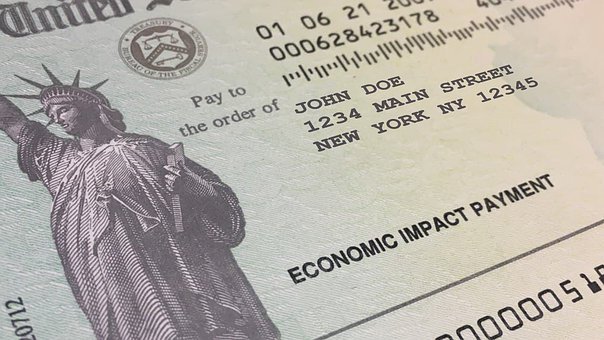Examining Biden’s Stimulus Plan
You might be seeing a $1400 check in the mail. Or rather, your parent or guardian might be. The first stimulus payments were set to arrive on March 17, although some banks and financial institutions even gave an advance on the payments, according to The New York Times. If you haven’t received a check yet, don’t despair. According to the Treasury and Internal Revenue Service, it might take weeks for the $1400 to arrive.
The checks constitute only one part of the nearly $1.9 trillion stimulus plan known as the American Rescue Plan. The package was signed by President Joe Biden on March 11 after passing in the House of Representatives 220 to 211.
The stimulus package is different from previous ones in a couple of notable ways. Students will be excited to learn that they are eligible for this round of stimulus checks, even if they are claimed as a dependent. If they are, however, they’re going to reach out to whoever claims them as a dependent, as the check will be mailed to that address.
Another notable change for students is that student loan forgiveness is no longer considered taxable income. This is important as President Biden considers forgiving $10,000 in student loans, and Senators such as Chuck Schumer and Elizabeth Warren push for this to be increased to $50,000. Any loan forgiveness experienced from now until the end of 2025 will not be taxable, meaning students won’t have to pay anything in income taxes for having their loan forgiven.
Unemployment benefits, an additional $300 per week, have been extended until September. In addition, the stimulus package provides extra tax benefits for parents, $50 billion for testing centers and $20 billion for vaccine administration. The American Rescue Plan also includes $170 billion for schools and universities to prepare for safe reopening, $350 billion for local governments and $82.5 billion for businesses.
While many of these measures received bipartisan support, there have also been concerns on whether the stimulus package will cause inflation. According to Forbes, the Federal Reserve has several options at its disposal to finance the American Rescue Plan, one of which is to print more money.
However, professor of economics Dr. Sahar Milani doesn’t think this is likely to develop into a legitimate issue. “This was a major concern surrounding fiscal stimulus in 2008-2009, which was in response to the global financial crisis, but serious inflation never materialized,” she says. “In fact, inflation was below the Federal Reserve’s target rate of 2 percent before the pandemic began so there is room for prices to rise somewhat.”
This also depends on fiscal and monetary policy, according to Dr. Shuwei Zhang, a professor of economics at St. Lawrence University. “According to the median inflation projection of FOMC participants, inflation over the next few months will move up at a very low pace,” says Dr. Zhang. “From this perspective, fiscal stimulus may help to achieve inflation moderately above 2 percent for some time. It’s good to see that fiscal and monetary policy are currently well coordinated with each other.”



